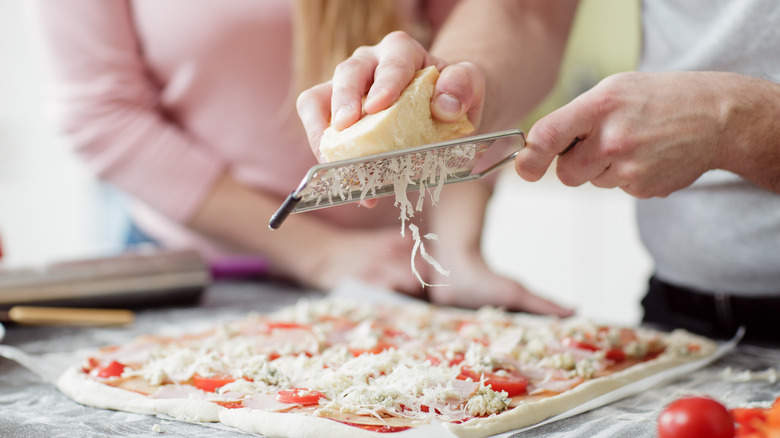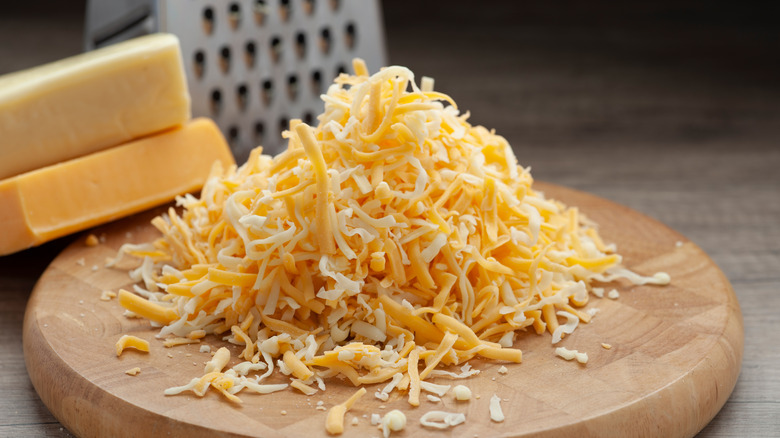The Real Reason You Should Only Grate Cold Cheese
Many cooks and foodies alike will agree that cheese makes everything better — a pizza topped with melty mozzarella, a bowl of macaroni smothered in gooey cheddar, or a plate of spaghetti marinara dusted with parmesan. There's something about the addition of salty, dairy-filled creaminess that just makes a dish that much more delicious. Along with all of the different types of cheese that exist in the world, there are also a lot of different ways to eat it, whether it's sliced, melted, or shredded.
If you're enjoying it on any of the above foods, you're likely grating your cheese, which is one of the most common methods of preparing it. To grate cheese, you don't need a lot of culinary skill: Simply run the block of cheese over a grater or hack it up with a chef's knife. But there are a few things to keep in mind when grating cheese — namely that you should only grate it when it's cold. Here's why warm cheese and graters don't mix.
A colder temperature prevents the cheese from melting together
What you want when you grate cheese is perfectly separated shreds. What you don't want is a ball of melty, mush. The latter is what you'll likely get if you try to grate your cheese when it's warm or at room temperature. That's why we strongly suggest always using cold cheese right out of the refrigerator. Good Housekeeping agrees, adding that grating cold cheese is less of a mess — you won't end up with it all over your hands or all over the grater. The delicious snack will end up right in your dish, which is right where it belongs.
Note: Trying to grate soft cheese — like feta or brie — will result in the same smushed-up mess. For these types of cheeses, we recommend simply crumbing up the cheese with your fingers rather than trying to pass it through a grater.

